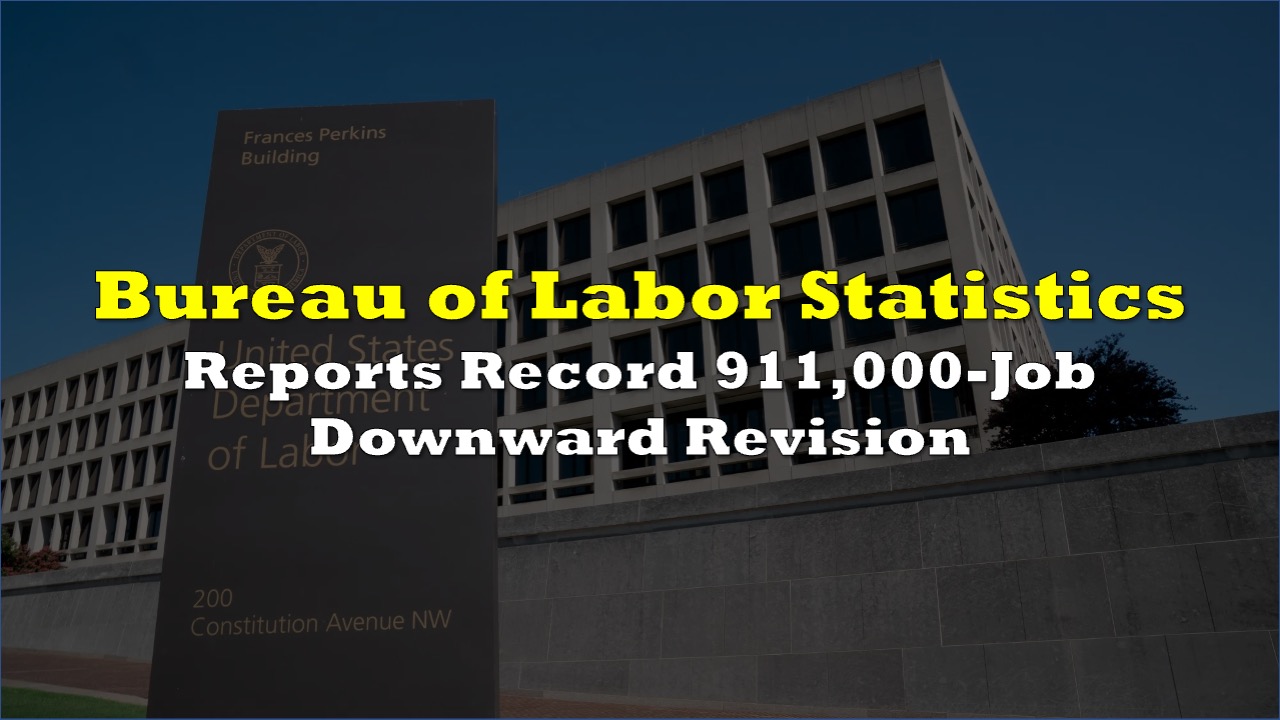The Bureau of Labor Statistics announced a record 911,000-job downward revision for the 12-month period through March 2025, underscoring ongoing tensions over the accuracy and political independence of US employment statistics.
The revision, representing a 0.6% reduction in reported job creation, appears to be the largest on record and comes amid unprecedented political pressure on the agency responsible for tracking America’s labor market.
US economy reportedly added 911,000 fewer jobs than initially reported through March 2025
— Luke Gromen (@LukeGromen) September 9, 2025
Yet in fiscal 1H25 (thru Mar), US Employment receipts were up 7% y/y (those are cash receipts)
Would seem to be a smoking gun that inflation is running well > reported official inflation🤔 https://t.co/OzzACM5eoE pic.twitter.com/hX7K2enETe
President Donald Trump fired BLS Commissioner Erika McEntarfer in August after claiming, without evidence, that jobs data was “rigged” to help Democrats. “I believe the numbers were phony,” Trump told reporters. “So, you know what I did? I fired her.”
Read: Economic Experts Condemn Trump’s Firing of Labor Statistics Chief
The dismissal drew sharp criticism from former commissioners, including William Beach, a Trump appointee who called it “a dangerous precedent” that “undermines the statistical mission of the Bureau.” Beach and other former officials noted that commissioners don’t see jobs data until Wednesday before release and have no role in data collection or processing.
Large revisions, while politically sensitive, are part of BLS’s standard annual benchmarking process that dates back 90 years. The 2009 revision was nearly the same size at 902,000 jobs. “Revisions are not a bug. They’re a feature,” former BLS Commissioner Erika Groshen explained, noting that initial estimates are based on incomplete survey responses that get refined over time.
The agency surveys about 120,000 employers monthly, but response rates have declined to 43% from 59% pre-pandemic, forcing greater reliance on statistical estimation. Economists say this doesn’t necessarily compromise accuracy but can increase volatility in initial estimates.
Beyond political pressures, BLS has faced technical problems including data leaks to Wall Street firms and delayed releases during market-sensitive announcements. In August 2024, at least three Wall Street firms received payroll revision data before the official release, raising concerns about market fairness.
The agency also increasingly relies on statistical imputation to fill data gaps, with about 35% of price data now estimated rather than directly measured due to staffing constraints and survey non-response.
In the post above, Luke Gromen, founder of research firm FFTT LLC, pointed out what he described as employment tax receipts showing a 7% year-over-year increase despite the downward jobs revision, suggesting wages may be rising faster than official statistics indicate.
Related: US Government Cuts Force A Third of CPI Data to Be Based on Estimates
The discrepancies matter because employment data influences Federal Reserve policy decisions and shapes economic expectations. “I feel like this data that is coming out is getting much less reliable,” said DoubleLine CEO Jeffrey Gundlach.
The final benchmark revision will be released in February 2026.
Information for this story was found via the sources and companies mentioned. The author has no securities or affiliations related to the organizations discussed. Not a recommendation to buy or sell. Always do additional research and consult a professional before purchasing a security. The author holds no licenses.









